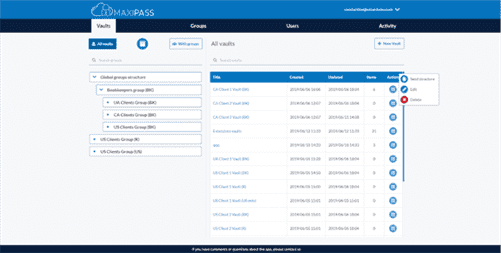Contents
Keep reading to found out how to setup iSCSi for ESXi on FreeNAS. Basically, you can simply load a VM up with FreeNAS, install a couple of VMXNET3 network adapters and one or more extra VMDKs. The extra VMDKs are used as storage for your iSCSI LUN. I do a lot of labbing in the home lab with various storage needs and shared storage requirements.

Actually, I left this as default as the IQN will be autogenerated. The most noticeable change with this release of FreeNAS is the all new web interface. The FreeNAS 11.2 release introduces a new updated web interface based on Angular and Javascript which provides a much more modern look and feel to managing your FreeNAS appliance. FreeNAS and the whole ZFS on BSD kernel story is dying, get Ubuntu and ZoL, there’s much wider community coverage and better hardware support either way.
Go to Services and enable iSCSI, also checking the Start Automatically box. The network I’ll be using for iSCSI is a simple 4 direct links between 2 servers. It’s best practice to have your iSCSI network separate from every other network. Click “Services” from the left menu and make sure iSCSI service is “Running”. Check the “Start Automatically” box to start iSCSI after every reboot.
Add iSCSI Server (Dynamic discovery tab)
If you don’t you can read how to setup FreeNAS server and then come back to this article for the next steps. There are two parts to the iSCSI protocol, Software Engineer Internship JPMorgan Chase & Co the first being clients and the second being storage devices. I recently wrote an article on how to setup a NAS using the open source FreeNAS software.
The LUN is expanded and the partition table edited to add the new space to the last partition. The Windows disk manager must still be used to resize the NTFS filesystem on that last partition to use the new space. To listen on all IPv6 addresses.PortintegerTCP port used to access the iSCSI target. Default is 3260.FreeNAS® systems with multiple IP addresses or interfaces can use a portal to provide services on different interfaces or subnets. MPIO is more efficient than a link aggregation. Shares provide and control access to an area of storage.
Consider factors like operating system, security, transfer speed, and user access before creating a new share. Option hides the share namedhomes so that only the dynamically generated share containing the authenticated user home directory will be visible. By default, thehomes share and the user home directory are both visible.

This will tell it to use Jumbo Frames and can result in higher throughput and lower CPU usage. It’s been over 2 years since my previous guide on setting up iSCSI between FreeNAS and ESXi and in that time many things have changed. FreeNAS now has a new UI, making things simpler and more straight forward. I think we can all agree the prettier graphs are extremely important too. You can leave the IP as “0.0.0.0” which is the wildcard address of the interface.
If you want to enable security authentication, choose “CHAP” for “Discovery Auth Method” and fill out the Group ID, User, and Secret fields. The Secret must be between 12 and 16 characters. Go to “Storage” → “Pools”, open the Pool options by clicking the three dots on the right of your pool, then “Add Zvol”.
1. Apple (AFP) Shares¶
This will make the iSCSI datastore available to each host in your cluster. You can even skip the clustering part if you really want, bu clustering enables a lot of other nice features in vCenter. In your setup, I see you have 4 nics on your FreeNAS box, whereas on my motherboard, I only have 4 factory fitted nics and no slots for adding any more.
Set the size to 0 as this causes the iSCSI target to use the new size of the file. If an initiator has an active connection to the LUN, it is indicated in red text. Clearing the initiator connections to a LUN before deleting it is recommended. The name of the AFP share is displayed in the SHARED section in the left frame and the contents of any data saved in the share is displayed in the right frame.

This is an easy way to have a a hard drive installed on your machine that isn’t really attached, it lives on the network. This is where the steps differ..you’ll see this freenas-proxmox folder, all the files you need are in there. I’d had an issues with network throughput being slow on Hyper-V VMs, after I did PCIe SR-IOV to the VM my setup gone faster.
I did several tests and found Filezilla is the most slow. Is been easier to have high availability on 2 synology NAS, and i never managed to make high availability with Server 2016 clustering, but i managed to configure FTP Server on IIS. In the past i used to actually “see” my files and keep backups with GoodSync on FreeNAS and iSCSI i don’t know what to do. Each VM storage is a separated iSCSi block storage from a FreeNAS Box. Is shown when backing up to the FreeNAS® system, a sparsebundle image must be created usingthese instructions.
What is iSCSI?
It also supports the VAAI primitives for efficient operation of storage tasks directly on the NAS. To take advantage of the VAAI primitives,create a zvol and use it tocreate a device extent. FreeNAS® uses theNetatalkAFP server to share data with Apple systems. This section describes the configuration screen for fine-tuning AFP shares. It then provides configuration examples for configuring Time Machine to back up to a dataset on the FreeNAS® system and for connecting to the share from a macOS client.
Most of what you are asking is on the freenas side of backing up. Xen orchestra he great tools for doing delta backups and continuous replication to SR and SMB. If you as asking for specifically backing up freenas iscsi then do a ZFS replication to another freenas box.
- This is a bit outside the scope of your tutorial but – should I be setting up a seperate pool on the Freenas side for each VM?
- You can leave the IP as “0.0.0.0” which is the wildcard address of the interface.
- Configure a global quota using the instructions inSet up Time Machine for multiple machines with OSX Server-Style Quotasor create individual share quotas.
- Device – Click here to select the Zvol we created earlier.
- I have a 16 core virtualization FreeNAS 11.3-U4.1 instance running on Hyper-V with 32GB of RAM with a 18TB iscsi target on DELL T630 server grade hardware.
I do not have any dedupe running, default compression only. HDD are on IT mode from the RAID card, so presented to the FreeNAS box as individual drives. Before in was used manual way connecting my ESXi’s to Freenas servers. Now we can connect VMware ESXi to your FreeNAS iSCSI block sharing.
Enable iSCSI service
Separate each entry with a space.Pool Available Space ThresholdintegerEnter the percentage of free space to remain in the pool. When this percentage is reached, the system issues an alert, but only if zvols are used. SeeVAAI Threshold Warning for more information. When a guest share is created along with a share that requires authentication, AFP only maps users who log in as guestto the guest share. If a user logs in to the share that requires authentication, permissions on the guest share can prevent that user from writing to the guest share. The storage devices are called iSCSI targets and must be running some type of software/hardware to receive the incoming requests from the iSCSI initiators.
ESX requires a hardware iSCSI adapter while ESXi requires specific iSCSI boot firmware support. The magic is on the booting host side, meaning that there is no difference to the FreeNAS®configuration. See theiSCSI SAN Configuration Guidefor details. If a LUN is added while iscsiadm is already 20 Recipes for Programming MVC 3 connected, it will not see the new LUN until rescanned withiscsiadm -m node -R. Alternately, useiscsiadm -m discovery -t st -p portal_IPto find the new LUN and iscsiadm -m node -T LUN_Name -lto log into the LUN. To access the iSCSI target, clients must use iSCSI initiator software.
You can configure it with any addresses you like as long as it’s reachable from ESXi and each link is on a different subnet. In order to access the data on the iSCSI share, clients will need to use iSCSI Initiator software. An iSCSI Initiator client is pre-installed in Windows 7 to 10 Pro, and Windows Server 2008, 2012, and 2019.
Windows caches user account credentials with the authenticated share. This sometimes prevents connection to a share, even when the correct username and password are provided. The authentication dialog reappears the next time the user connects to an authenticated share. Be careful when using multiple SMB shares, some with and some without fruit. To resolve this, all macOS clients need to disconnect from all SMB shares and the first reconnection to the server has to be to a fruit-enabled share. This chapter starts by summarizing the available configuration options.
Those systems do not support this feature.Default file permissionscheckboxes✓Only works with Unix ACLs. New files created on the share are set with the selected permissions.Default directory permissionscheckboxes✓Only works with Unix ACLs. New directories created on the share are set with the selected permissions.Default umaskinteger✓Umask is used for newly Offshore Software Development Services created files. Default is 000 .Hosts Allowstring✓Enter a list of allowed hostnames or IP addresses. Separate entries with a comma, space, or tab.Hosts Denystring✓Enter a list of denied hostnames or IP addresses. Separate entries with a comma, space, or tab.Auxiliary Parametersstring✓Enter any additional afp.conf parameters not covered by other option fields.
